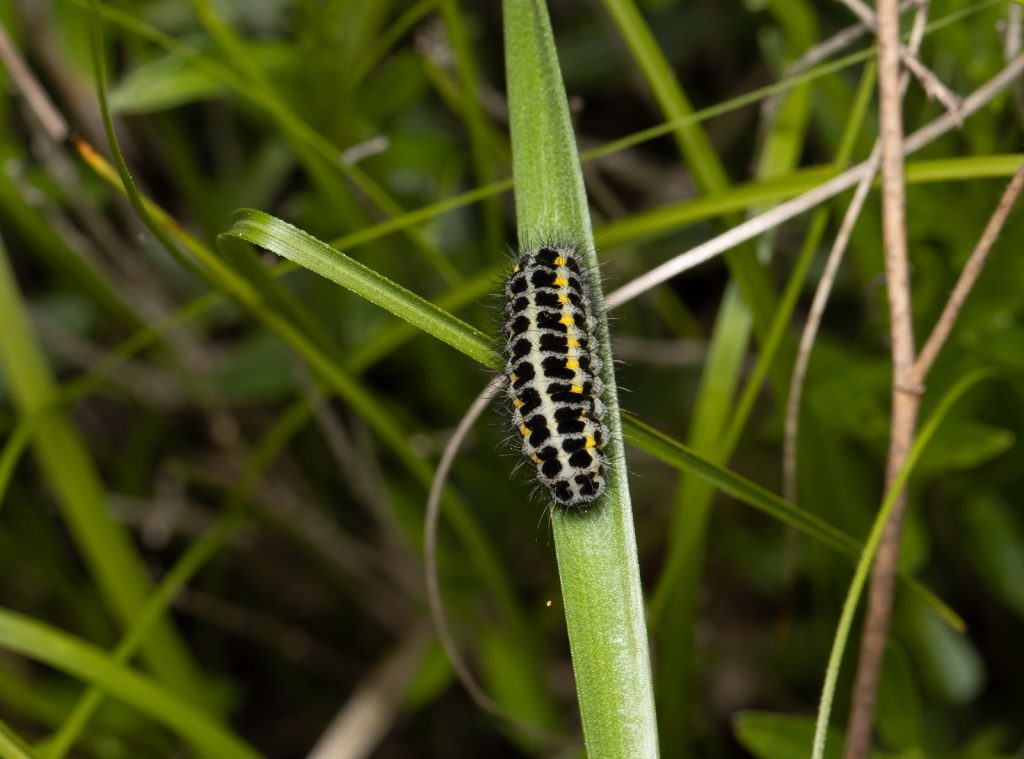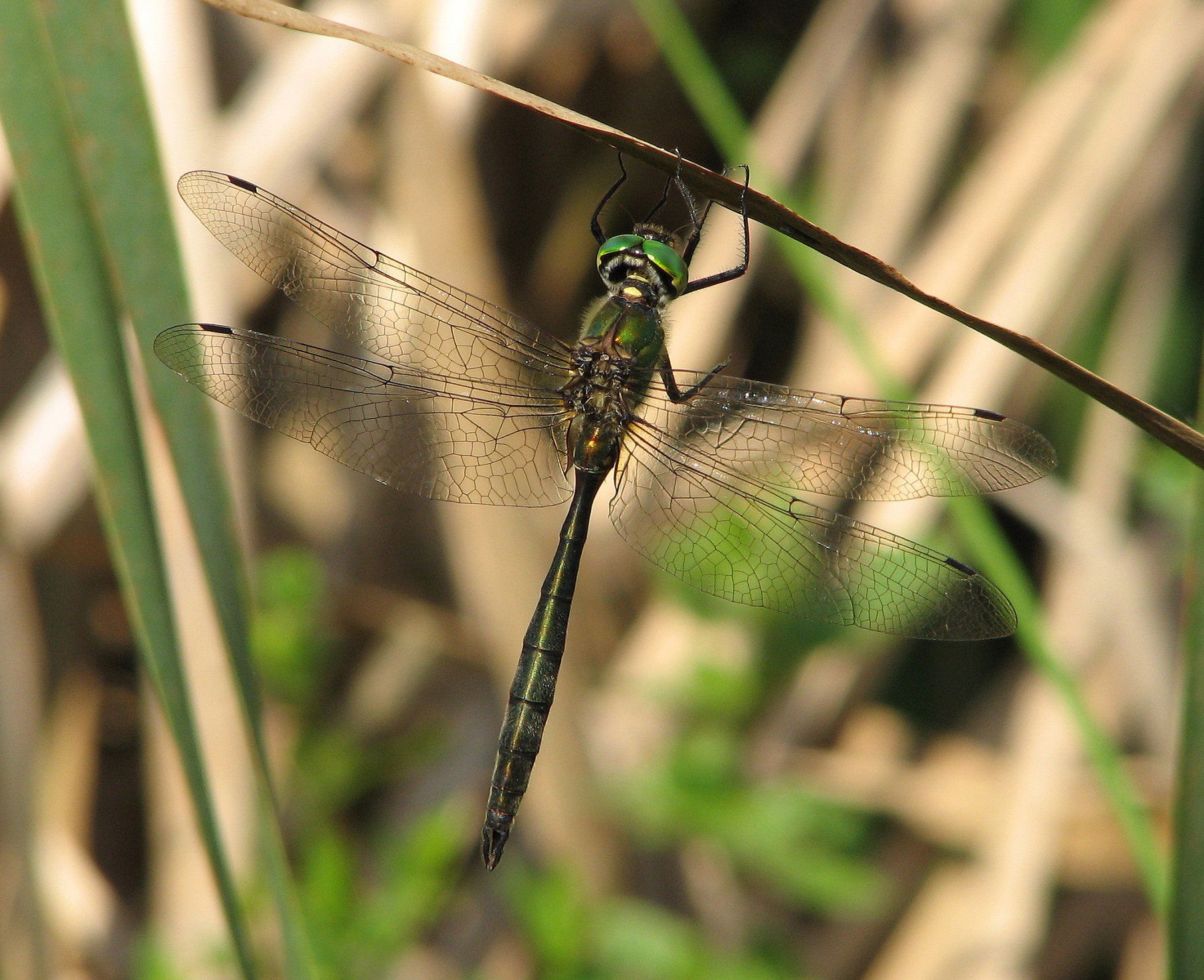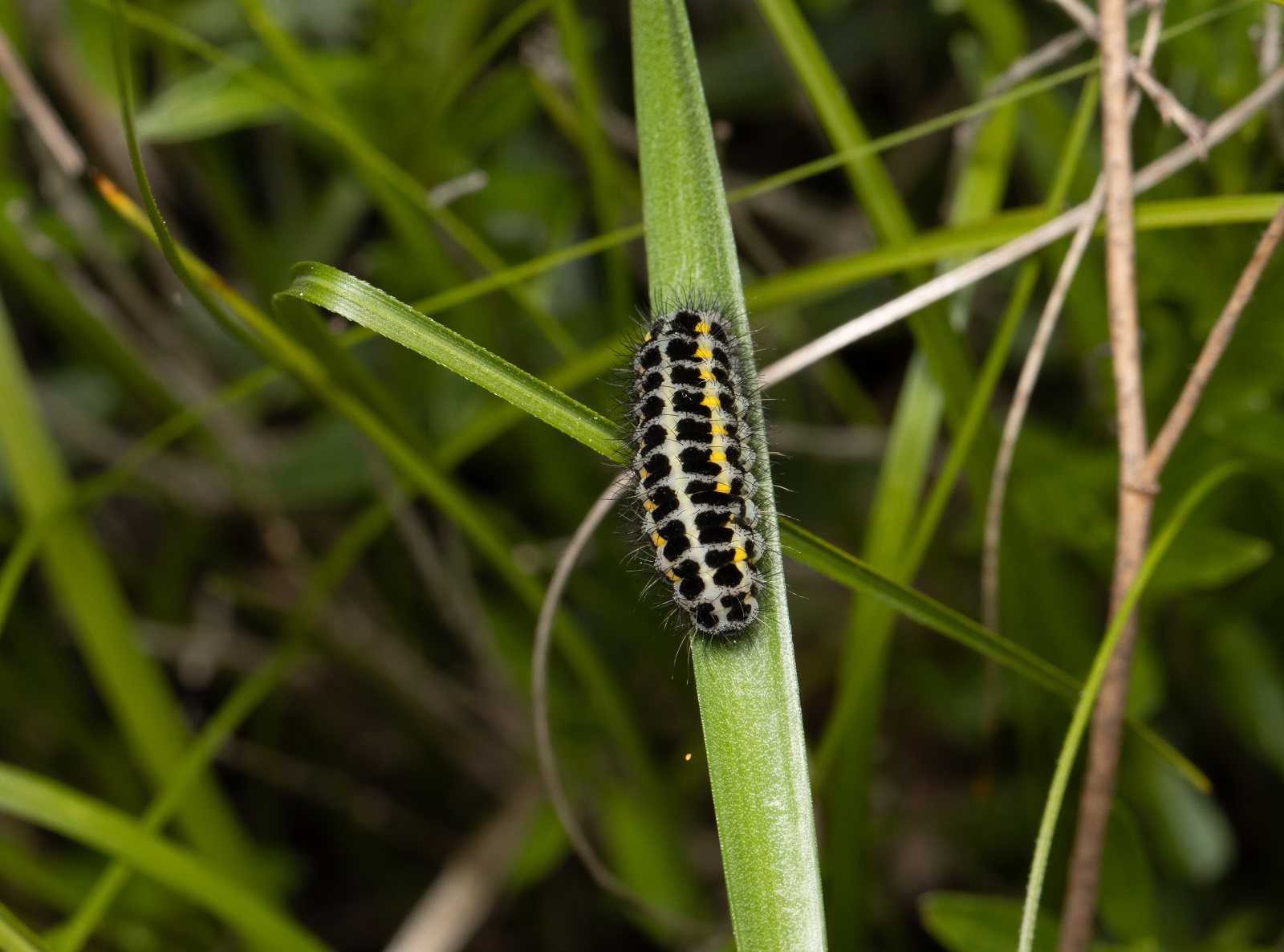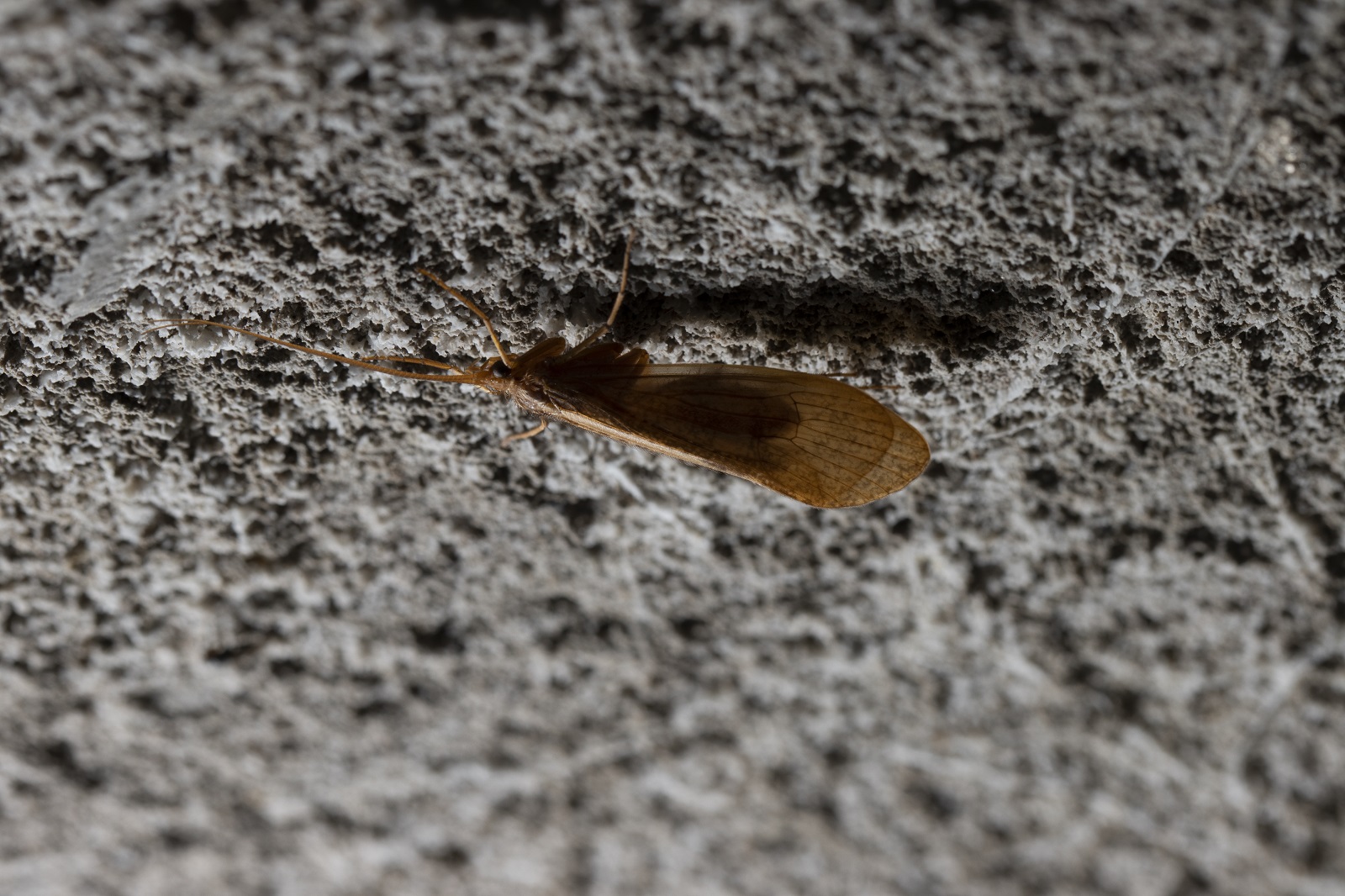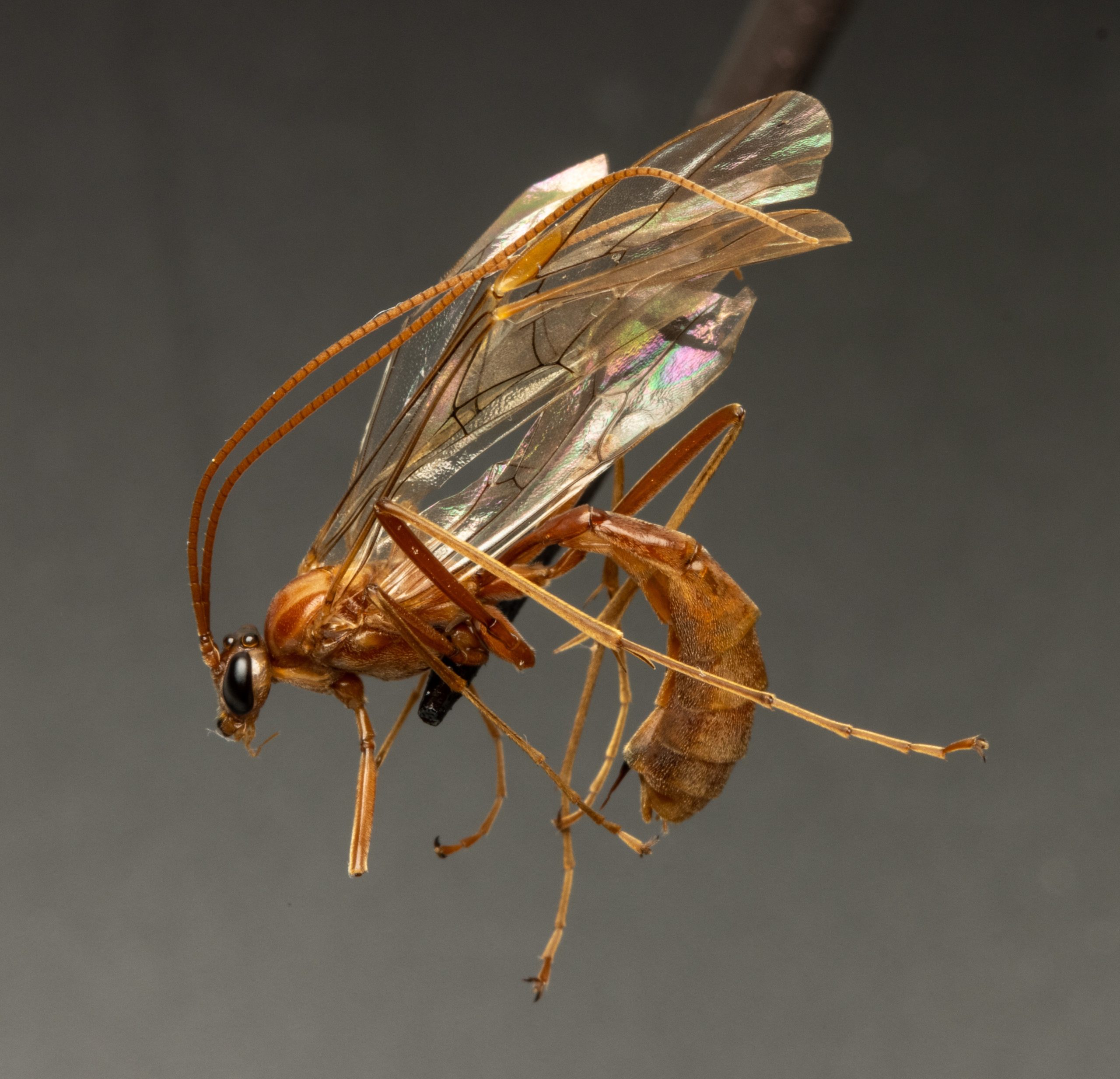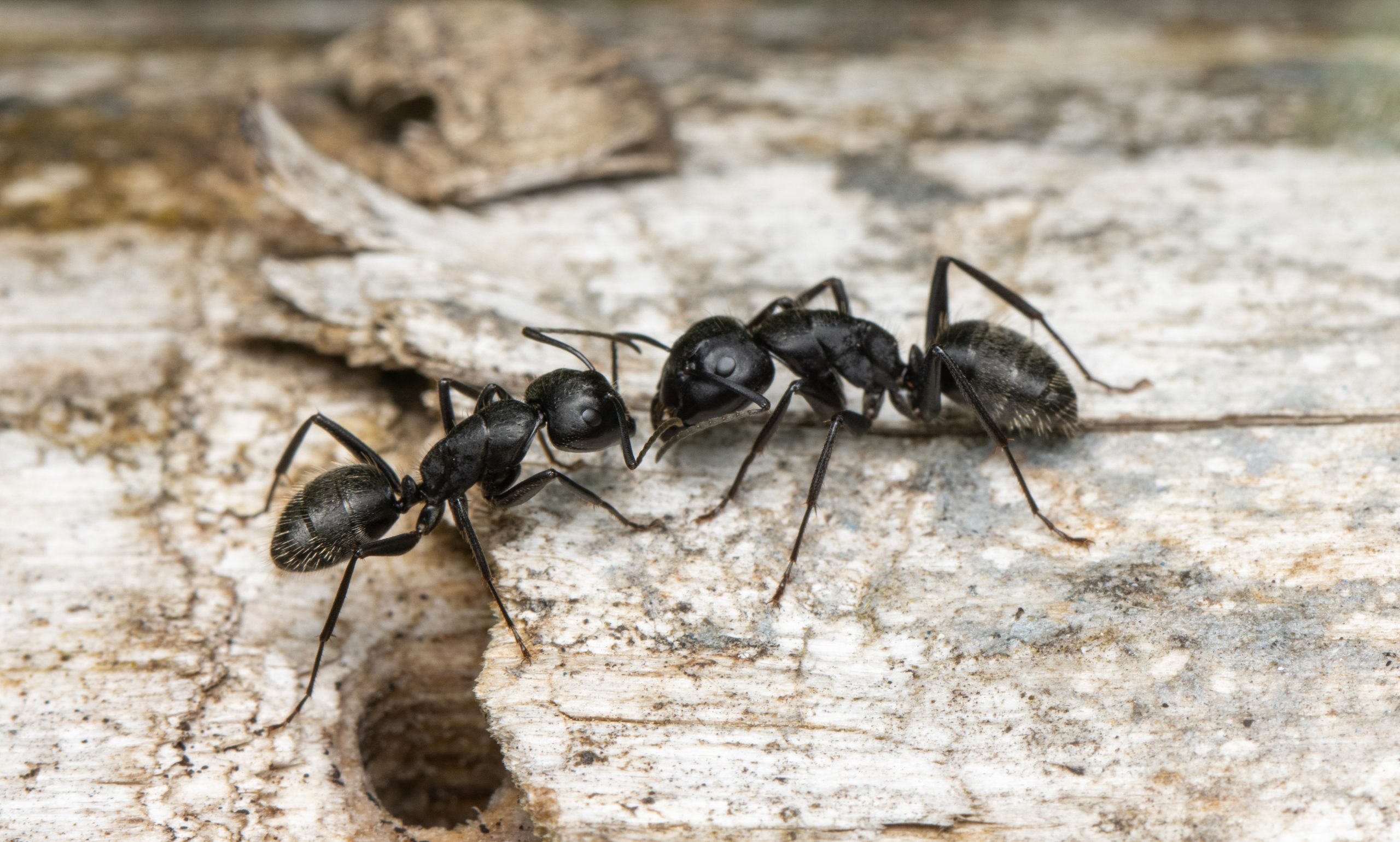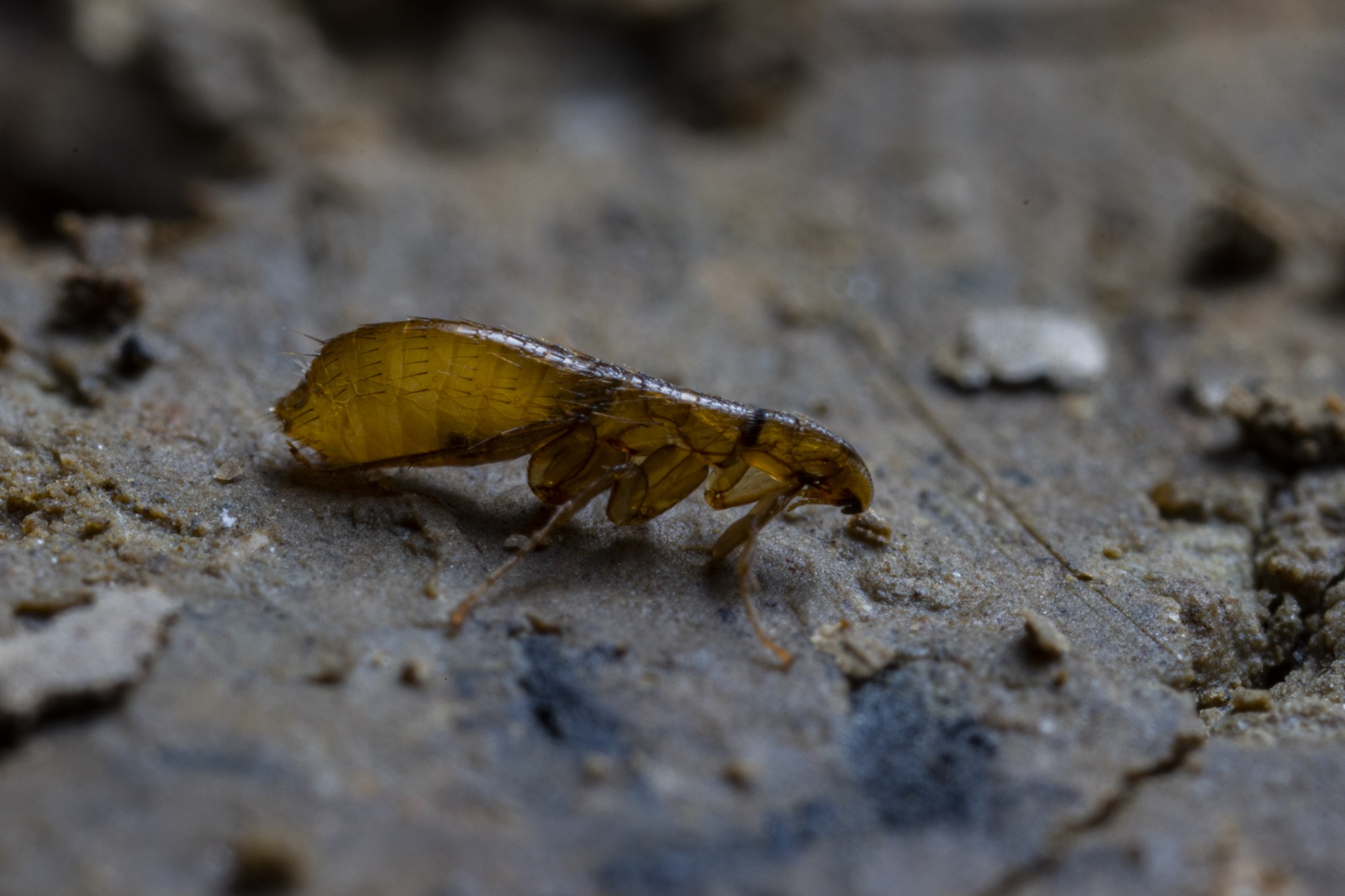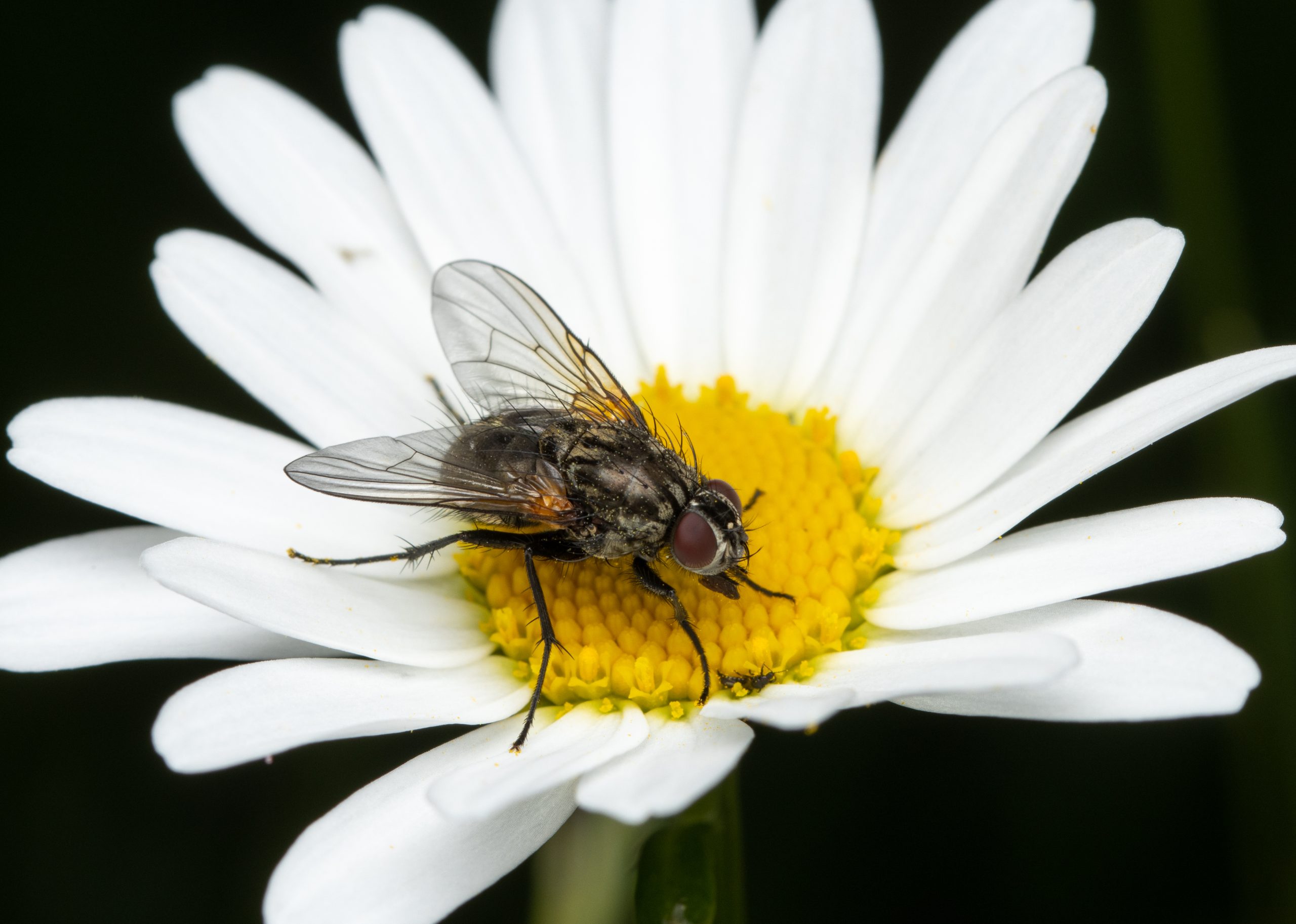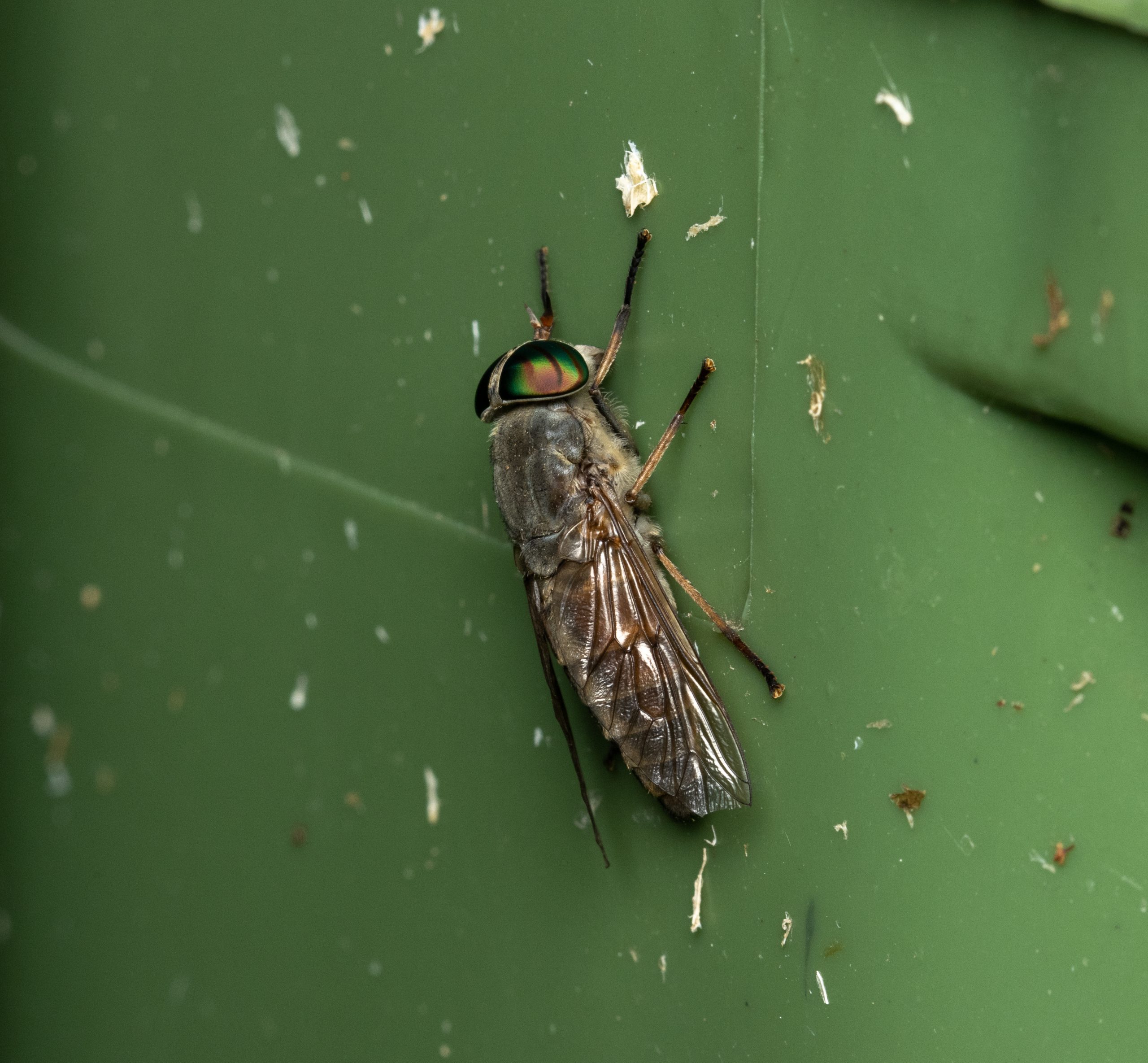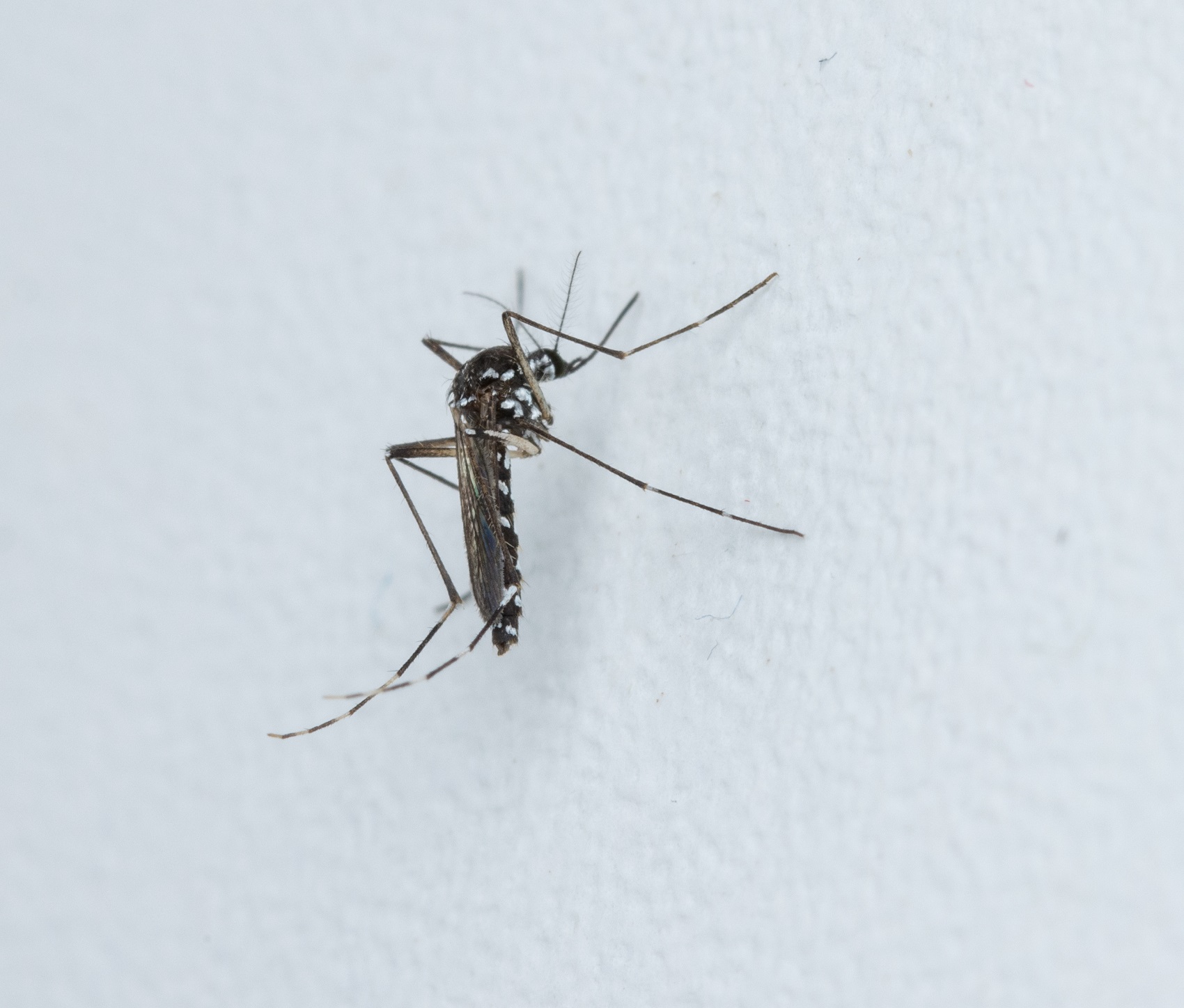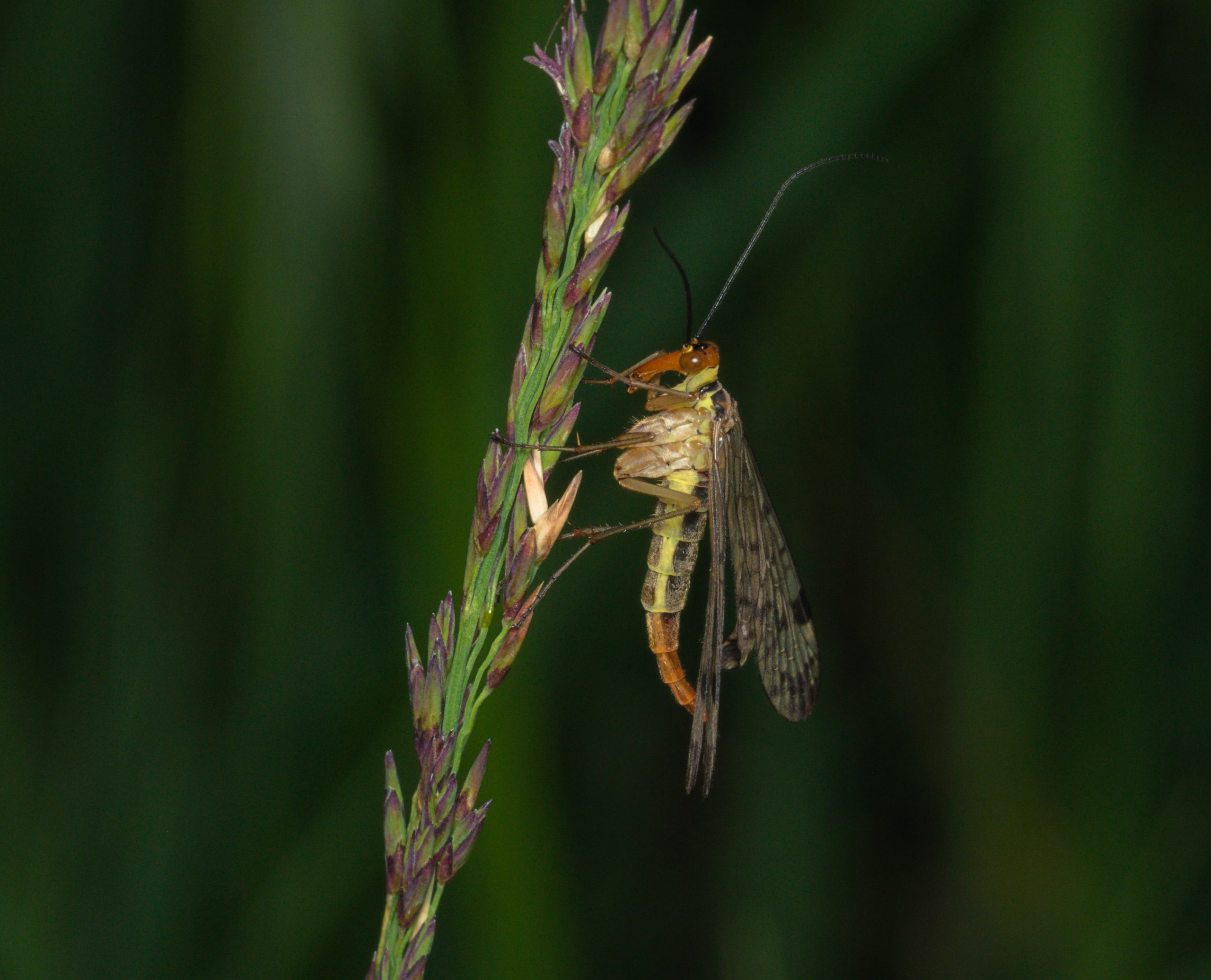- Insects
Lepidoptera (larvae)
The larvae of lepidopterans are caterpillars, which depending on the species and developmental stage, range from just one millimeter to up to 14 centimeters in length. Often they are vividly colored and can be densely covered with bristles. Their bodies are soft and organized into a head, thorax and abdomen. Very similar in appearance are also larvae of sawflies (Symphyta), however due to some specific characteristics they can be differentiated.
The head bears mouthparts adapted for chewing, very short antennae and usually twelve individual simple eyes (six on each side of the head). The larvae of sawflies have only one pair of simple eyes.
On the thorax are three pairs of legs.
The abdomen has 2 – 5 unsegmented fleshy prolegs that terminate with a ring of hooks. The larvae of sawflies have six or more pairs of prolegs on their abdomens, and their prolegs also lack the hooks.
Lepidopterans are one of the most successful orders of insects with around 180.000 known species. They are distributed on all continents with the exception of Antarctica, where they inhabit all terrestrial habitats.
The caterpillars hatch from eggs that the adult females deposit on the plants the caterpillars feed on. Caterpillars of many lepidopteran species are limited to feeding on just one plant species. Caterpillars of some lepidopterans are predatory and feed on other insects. The caterpillars are voracious feeders that grow very quickly, since they have to stockpile enough materials for the metamorphosis into the adult butterfly and egg production. The mature caterpillar pupates and metamorphoses into an adult butterfly. Generally, different species of lepidopterans are recognized in their adult stage, but there are some species which have very similar adults and can be differentiated only in larval stages.
The caterpillars of lepidopterans are often prey of numerous animals. The caterpillars thus have different defense mechanisms against predation. The external appearance of the caterpillar itself can serve as a defense. The caterpillar’s appearance can indicate its inedibility or toxicity; it can also make the caterpillar appear bigger or more dangerous than it actually is. Some caterpillars have a cryptic appearance which helps them to hide in the environment. Numerous caterpillars are also toxic. Generally, they obtain their toxins from the plants they feed on. Often the caterpillars are covered with bristles associated with venom glands, which can detach and irritate skin and mucous membranes. The venom in bristles of South American genus Lonomia contains a potent anticoagulant which can cause life-threatening hemorrhages. The venomous bristles are characteristic also for the caterpillars of pine processionary (Thaumetopoea pityocampa), which at the end of their development migrate to pupation sites in long columns.
More photos
Related arthropods

Authors
- Urban Bogataj,
- Gregor Bračko,
- Teo Delič,
- Cene Fišer,
- Žiga Fišer,
- Rok Kostanjšek,
- Rudi Verovnik,
- Miloš Vittori,
- Valerija Zakšek.
Students Vito Ham, Vesna Jurjevič, Gaj Kušar, and Adrijan Samuel Stell Pičman also participated in the project.
